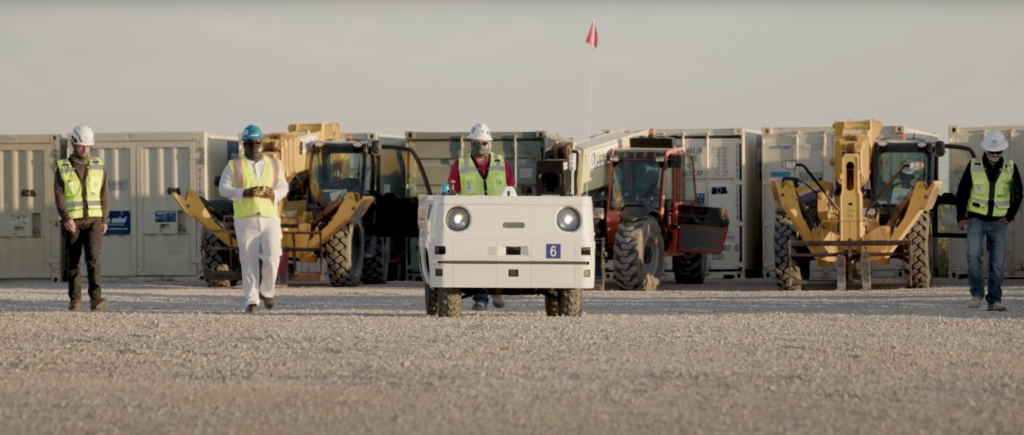Honda, alongside engineering and construction company Black & Veatch, has successfully tested a prototype Honda Autonomous Work Vehicle (AWV) at a Black & Veatch construction site in New Mexico.
During the month-long field test, the second-generation prototype of the fully electric AWV performed a range of functions at the large-scale solar energy construction project, including towing activities and transporting construction materials, water, and other supplies to pre-set destinations within the work site. While Honda previously performed testing with an earlier generation of the AWV, this field test was apparently the first to deploy multiple units working collaboratively to support construction use cases.
First introduced as a concept in 2018, the AWV combines the company’s off-road side-by-side platform with autonomous technology. The result is said to be a new category of work vehicle that can be deployed in a variety of dynamic environments. The AWV employs a suite of sensors to operate autonomously, using GPS for location, radar and lidar for obstacle detection and stereoscopic (3D) cameras for remote monitoring. The vehicle can also be operated by remote control.
Black & Veatch worked with Honda to provide a real-world testing ground to validate the AWV technology. The company’s personnel were trained by Honda’s engineers on the operation and safety protocols of the vehicles to effectively use the technology in the field. The construction company also provided detailed feedback for product and business requirements to help enhance AWV’s capabilities and services.
“With our test partner, Black & Veatch, Honda was able to demonstrate the performance of our rugged all-electric Autonomous Work Vehicle prototype in a large-scale construction environment,” said Kenton Williams, US project lead for the Honda AWV. “We believe the Honda AWV has the potential to bring greater efficiencies, higher levels of safety and better environmental performance to the construction industry, and to other industries seeking an autonomous off-road solution.”
 In order to validate the capabilities of the AWV, the company selected a solar energy construction site where support structures for solar panels are laid out in a grid pattern at regular intervals. This presented the ideal environment to test the ability of the Honda AWV to stop at precise points along a pre-set route.
In order to validate the capabilities of the AWV, the company selected a solar energy construction site where support structures for solar panels are laid out in a grid pattern at regular intervals. This presented the ideal environment to test the ability of the Honda AWV to stop at precise points along a pre-set route.
Honda produced a high-definition map of the 1,000-acre site that allowed Black & Veatch operators to precisely set start and stop points for multiple AWVs using a cloud-based app interface that runs on tablets and PCs. The vehicles successfully delivered materials and supplies along a calculated route and proved capable of stopping within centimeters of the pre-set points.
The field test also demonstrated the viability of the AWV’s battery system to support energy-intensive sensors and provide vehicle propulsion, while operating up to eight hours in a high-temperature environment. The vehicle carried payloads of nearly 900 lb, and in a separate use case towed a trailer carrying over 1,600 lb.
Based on the capabilities verified in this field test, Honda believes the AWV will be capable of providing a wide range of services to a variety of industries that need a rugged off-road autonomous solution, especially where workforce constraints and safety concerns make other solutions impractical.

